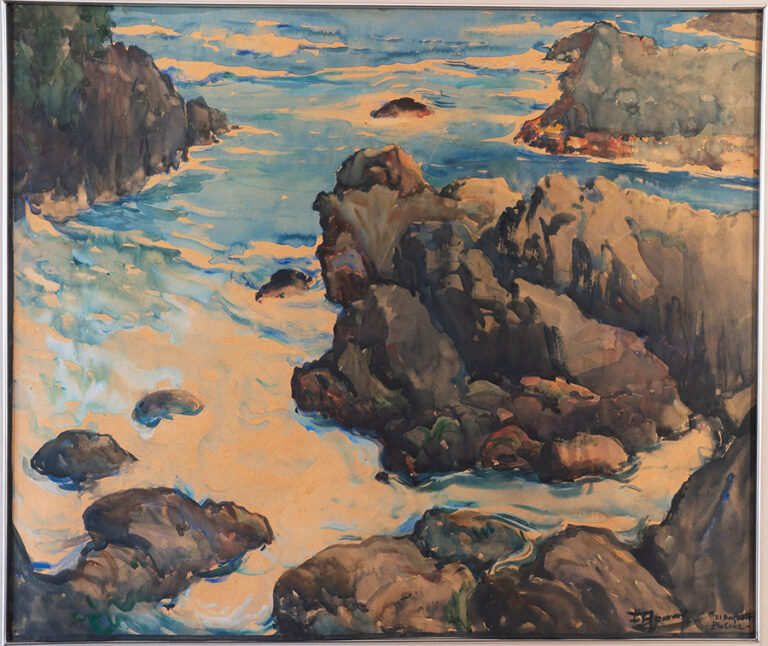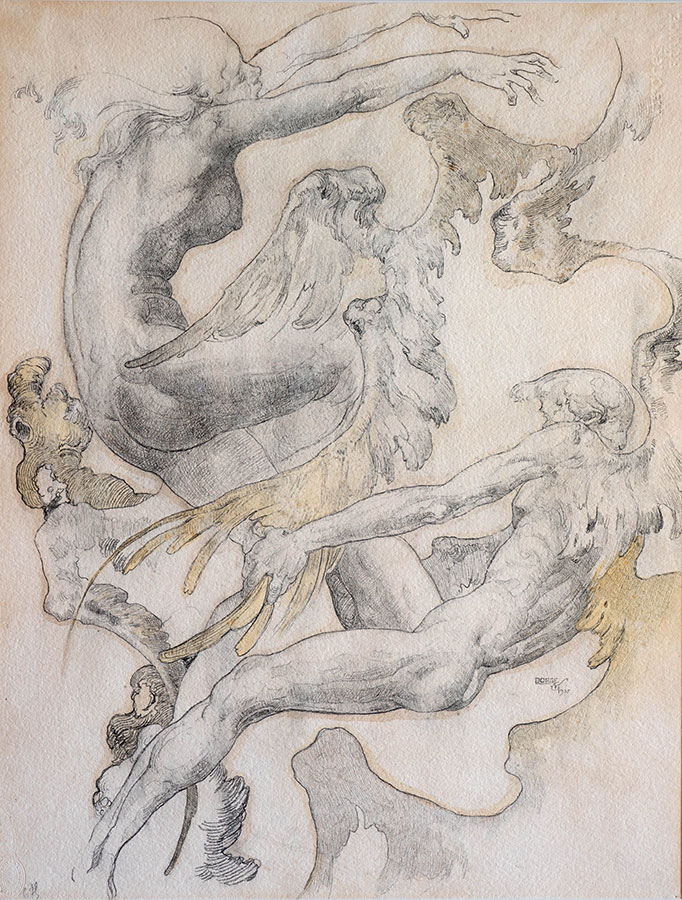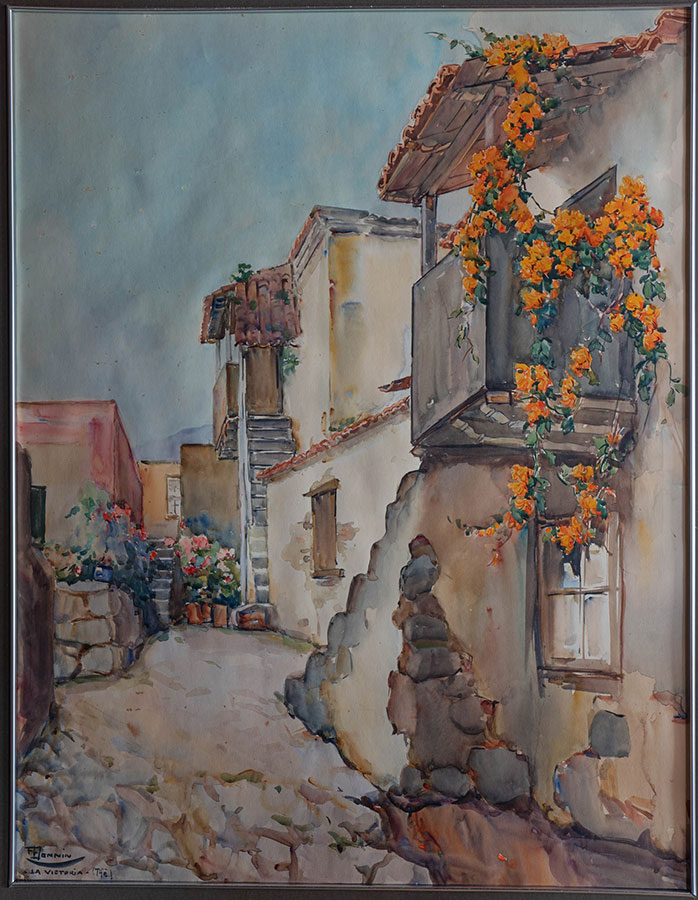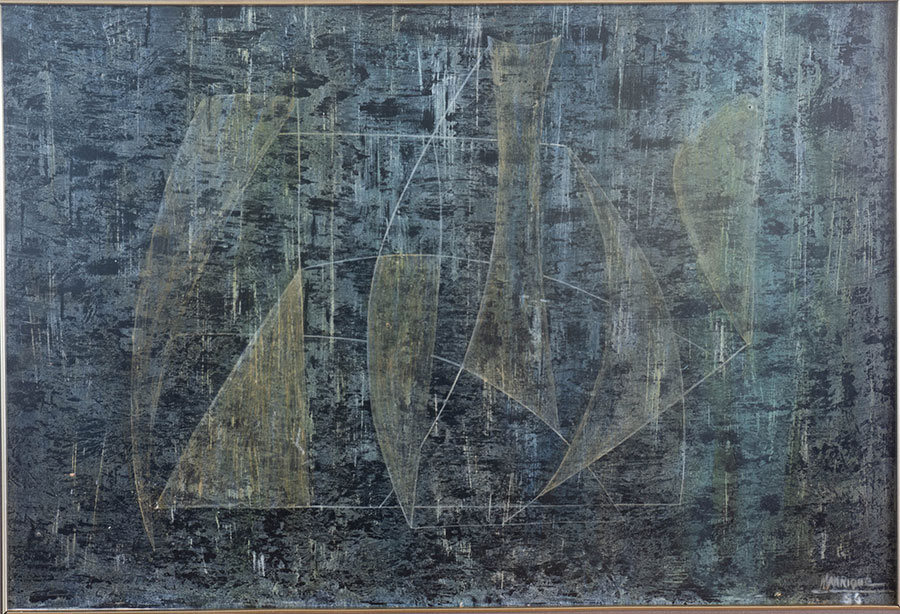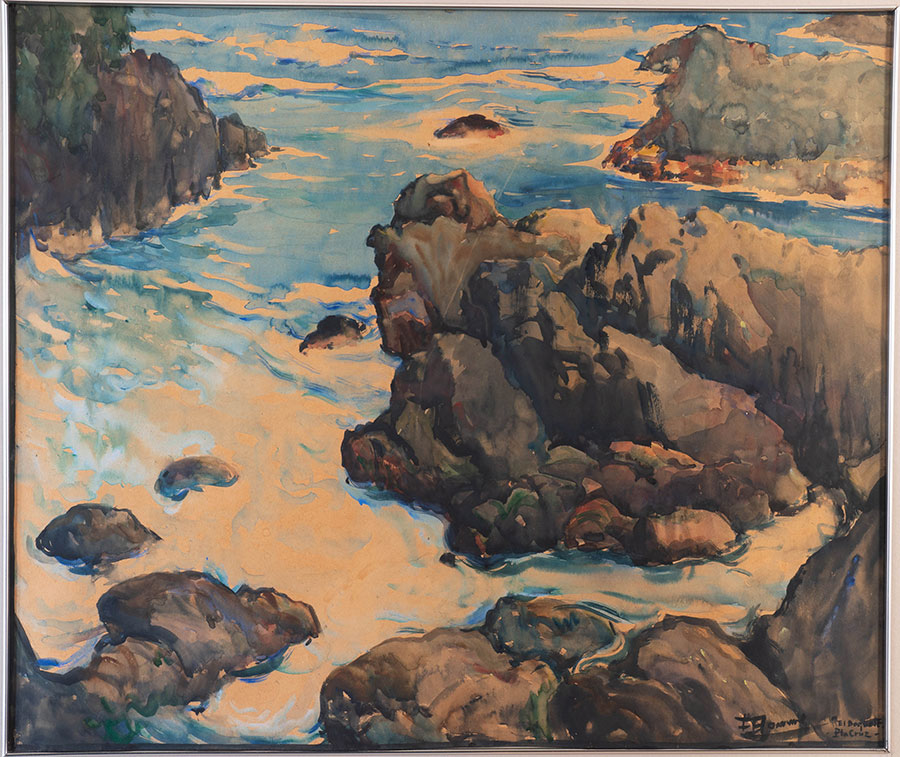
- Type of work: Painting on paper
- Technique: Watercolor on paper
- Approximate dimensions: 47,5 x 56 cm
- Subject: Marine
- Title: El Boquete
- Author: Francisco Bonnin Guerín (1874-1963)
- Chronology or Year: 1933
- Historical-artistic analysis:
Style: Landscape painting, specifically a marine, within the regionalism that seeks the exaltation of the Canary Islands, but following expressionist guidelines.
Description: It is the representation of a rocky corner of the coast of Puerto de la Cruz, but in a recreation of nature in which he does not dwell on the superfluous and lightens the description, building the objects based on a superposition of spots and drawing with thick brush strokes that delimit the contours of the forms, restricting the palette to the range of ochers, browns and blacks, along with the blues of the sea that occupies the background of the scene. The result is a watercolor of great fluency due to the predominance of stain and color, characteristic of the artist’s expressionist period (1931 – 1933) influenced by Bruno Brandt.
Date of receipt: After 1934
Remarks: In 1964 this work hung on the wall of the Sala de Juntas of the Casino de Tenerife, along with other paintings, among them The pageboyby González Méndez, a work by Diego Crosa and two allegorical drawings by Borges, according to Valeriano Weyler in the history of this institution.
About the author: Francisco Bonnín Guerín (Santa Cruz de Tenerife, 1874- Puerto de la Cruz, 1963) began his training with Ubaldo Bordanova as a student at the Municipal Academy of Drawing, being Verdugo Bartlett (1860-1895) the one who introduced him to the watercolor technique. He studied the military career in Segovia, entering in 1897, and since then he has alternated his military career with painting. In his first stage (around 1915) his watercolors are of small format, with great meticulousness in the rendering of details. In 1923 he went to Girona as a commander and came into contact with the Agrupación de Acuarelistas de Cataluña. On his return to Tenerife, he promoted the creation of the Círculo de Bellas Artes, where he established a drawing and painting academy in 1928. In 1927 and 1928 he held two exhibitions in the Circle with which he introduced the Agrupación de Acuarelistas de Cataluña in the Canary Islands, sowing the seed of the Agrupación de Acuarelelistas Tinerfeños, created in 1944. Between 1931-35 he developed his expressionist stage under the influence of Bruno Brandt, stripping himself of the excessive draftsmanship and giving the stain and color a greater freedom. The decade 1936-46 is the decade of diffusion and greater recognition of his work. With a luminous and colorful painting he became known in Switzerland, England and in many cities of the Peninsula, receiving the National Watercolor Prize in 1942. He increased his prestige by exhibiting in Madrid at the Palace of Santa Cruz, headquarters of the Ministry of Foreign Affairs in 1945 and 1946, and was named academician of Fine Arts of San Fernando in 1947, year in which the Agrupación de Acuarelistas Canarios was born under his presidency.
Bibliography:
Archive of the Casino de Tenerife. Documents relating to the composition of the Board in the early 1900s.
Carmen GONZÁLEZ COSSÍO: Francisco Bonnín. Viceconsejería de Cultura y Deportes del Gobierno de Canarias, Santa Cruz de Tenerife, 1993.
Valeriano WEYLER: The small history of a great casino (The one in Santa Cruz de Tenerife). Santa Cruz de Tenerife, 1964.
Agustín GUIMERÁ RAVINA, Alberto DARIAS PRÍNCIPE: El Casino de Tenerife 1840 – 1990, Santa Cruz de Tenerife, 1992.

